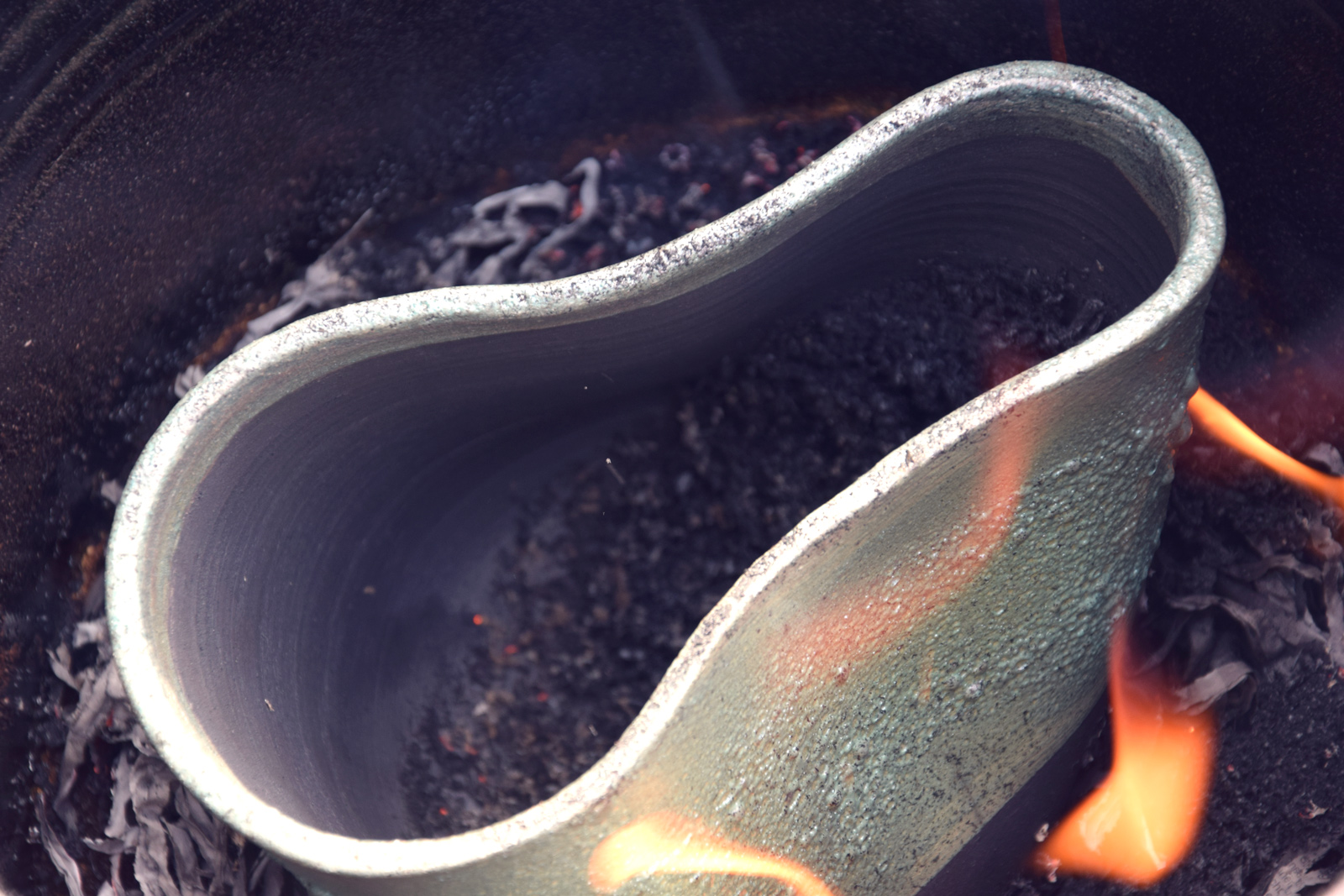The raku is fired in a gas-fired kiln in the open air at a temperature of around 1000 degrees Celsius. After the reduction already started in the kiln, I usually smother the hot extracted objects with sand mixed with wood shavings and play with them until the desired colour/effect is achieved. The wonderful interplay of earth, fire, air and water creates the stunning variety of colours of the raku objects.
According to Wiki, raku pottery (楽焼) originally referred to the ceramic works of a family of potters in Kyoto. They made decorative objects, but most commonly tea bowls for the traditional Japanese tea ceremony. They did not work in the usual way, because their hand-shaped ceramics were fired at low temperatures, removed from the kiln while still warm and placed in water or left in contact with cold air, which produced random effects. This made each piece unique. Today, they continue to make beautiful, traditional pieces; however, many contemporary artists are reimagining the technique to create raku objects in a whole new way.
The pleasure of time
What caught me about raku? Why am I still fascinated by this wonderful technique after all these years?
For years I was rushing: to work, shopping, errands, organising, picking up, dropping off, travelling, coming home, even playing sports … and time was rushing with me. Nowadays I can sometimes – more and more – slow down. That’s when I load. It’s not called ‘enjoying time’ for nothing; when I’m loading, I’m ‘present’, I exist in the now, I become one with the piece I’m loading. A wonderful ritual; a celebration of creation.















